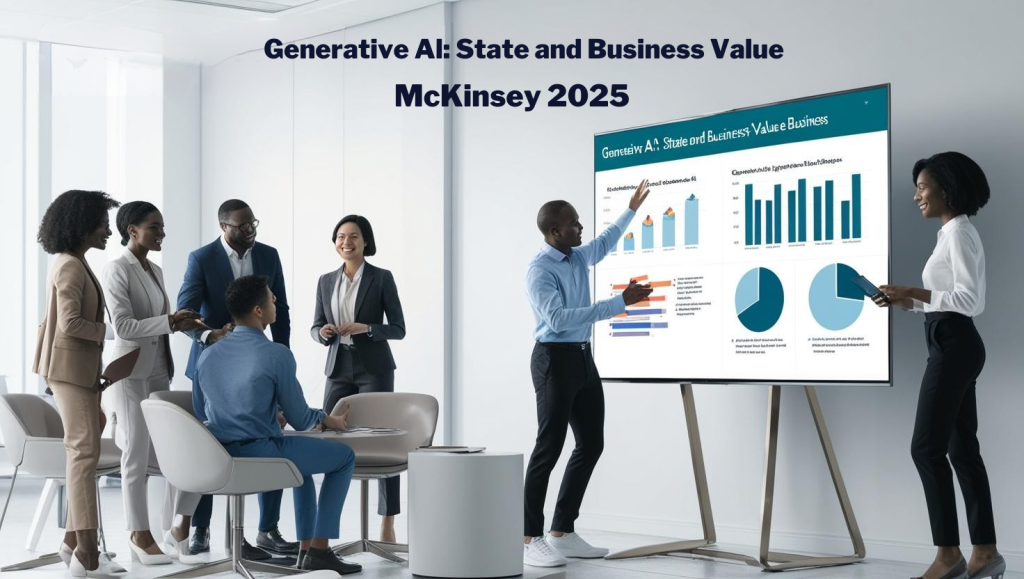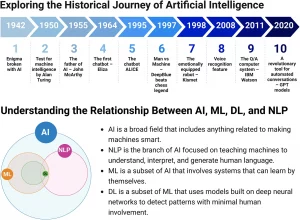The survey, conducted in July 2024, analyzes how organizations are adopting, implementing and deriving value from AI, identifying key trends, challenges and best practices.
Main Themes and Key Ideas:
Adoption and Growing Spread of AI:
The overall use of AI (both analytical and generative) continues to grow significantly. “More than three-quarters of respondents now say that their organizations use AI in at least one business function.” (More than three-quarters of respondents now say their organizations use AI in at least one business function.)
The adoption of gen AI is rapidly increasing. “The use of gen AI in particular is rapidly increasing.” (The use of gen AI in particular is rapidly increasing.)
In 2024, 78% of organizations are using AI in at least one business function, up from 72% at the start of 2024 and 55% in the previous year.
AI is being used in a growing number of business functions, with an average of three functions per organization. The most common functions include IT, marketing and sales, and service operations.
71% of respondents say their organizations regularly use Gen AI in at least one business function, up from 65% at the start of 2024. The most common functions for Gen AI are marketing and sales, product and service development, service operations, and software engineering.
Reorganization for Value Creation:
Organizations are starting to create structures and processes to generate significant value from gen AI. “Organizations are beginning to create the structures and processes that lead to meaningful value from gen AI.” (Organizations are starting to create the structures and processes that drive significant value from gen AI.)
Companies are redesigning workflows, elevating governance, and mitigating risks related to gen AI. “While still in early days, companies are redesigning workflows, elevating governance, and mitigating more risks.” (Though still early days, companies are redesigning workflows, elevating governance, and mitigating more risks.)
Workflow redesign is the attribute with the greatest impact on an organization’s ability to see an EBIT impact from the use of gen AI. “The redesign of workflows has the biggest effect on an organization’s ability to see EBIT impact from its use of gen AI.” (Workflow redesign has the greatest effect on an organization’s ability to see an EBIT impact from its use of gen AI.) 21% of respondents using gen AI say their organizations have redesigned at least some workflows.
Governance e Leadership dell’IA:
CEO oversight of AI governance is strongly correlated with greater bottom-line impact from the use of gen AI, especially in large enterprises. “Our survey analyzes show that a CEO’s oversight of AI governance […] is one element most correlated with higher self-reported bottom-line impact from an organization’s gen AI use.” (Our survey analyzes show that a CEO’s oversight of AI governance […] is one of the elements most correlated with greater self-reported bottom-line impact from an organization’s use of gen AI.)
28% of respondents say their CEO is responsible for overseeing AI governance.
Selective Centralization of AI Implementation:
Organizations tend to fully or partially centralize essential elements for AI implementation.
Risk management and data governance are often fully centralized (for example, via a center of excellence).
Tech talent and the adoption of AI solutions are most often managed with a hybrid or partially centralized model.
Gen AI Output Monitoring and Review:
Organizations vary widely in how they monitor gen AI outputs.
27% of respondents say that their organization’s employees review all content created by gen AI before using it. “Twenty-seven percent of respondents whose organizations use gen AI say that employees review all content created by gen AI before it is used…”. A similar share says 20% or less of content produced by gen AI is reviewed.
Mitigation of Risks Related to Gen AI:
Organizations are stepping up efforts to mitigate risks related to gen AI, particularly those related to inaccuracies, intellectual property violations and privacy. “Respondents report increasing mitigation of inaccuracy, intellectual property infringement, and privacy risks related to use of gen AI.” (Respondents report increasing mitigation of the risks of inaccuracy, intellectual property infringement and privacy related to the use of gen AI.)
Larger companies report greater risk mitigation than smaller companies.
Adoption and Scaling of Best Practices:
Most respondents have not yet seen a significant company-wide impact on bottom line from using gen AI.
Less than a third of respondents report that their organizations are following most of the 12 recommended adoption and scaling practices. “Less than one-third of respondents report that their organizations are following most of the 12 adoption and scaling practices for gen AI.” (Less than a third of respondents report that their organizations are following most of the 12 adoption and scaling practices for gen AI.)
Practices with the greatest impact on EBIT include tracking well-defined KPIs for gen AI solutions and, in larger companies, establishing a clear roadmap for gen AI adoption.
Larger companies are further along in implementing these best practices than smaller companies.
Impact of AI on Skills and Workforce:
Organizations using AI have continued to hire for AI-related roles over the past year, with the difficulty of hiring decreasing for many roles except data scientists.
Hiring of AI ethics compliance specialists has increased.
Many organizations have undertaken employee reskilling activities due to AI adoption and plan to ramp up these activities over the next three years.
Many respondents also say that their organizations have retrained some of their workforce as part of their AI implementation over the past year, and that they expect to undertake more reskilling in the years ahead.
Time saved through automation with gen AI is often reinvested in new tasks or increased responsibilities for employees. Larger companies are more likely to reduce staff as a result of the time saved.
The majority of respondents (38%) expect the use of gen AI to have a limited impact on the size of the workforce over the next three years. However, staff reductions are expected in service operations and supply chain management, while increases are expected in IT and product development.
Gen AI Usage and Output Types:
Text output is the most commonly created content type with gen AI (63%), but organizations are also experimenting with images (over a third) and computer code (over a quarter). “Most respondents reporting use of gen AI—63 percent—say that their organizations are using gen AI to create text outputs, but organizations are also experimenting with other modalities.” (The majority of respondents who report using gen AI – 63% – say their organizations use gen AI to create text output, but organizations are also experimenting with other modalities.)
Creating Value from Gen AI:
A growing share of respondents report increased revenue within business units using gen AI.
Most respondents also report cost reductions within business units using gen AI. “The latest survey finds that, for use of gen AI in most business functions, a majority of respondents report cost reductions.” (The latest survey finds that, for the use of gen AI in most business functions, the majority of respondents report cost reductions.)
However, the impact on company-wide bottom line is not yet significant for most organizations (over 80% see no tangible impact).
Personal Use of Gen AI:
Personal use of gen AI tools increased significantly in 2024, with C-level executives leading the way. “Individual use of gen AI by our respondents also increased significantly in 2024, with C-level executives leading the way…”. 53% of executives surveyed say they regularly use Gen AI at work.
McKinsey’s survey highlights that the adoption and use of gen AI is growing rapidly and that organizations are starting to implement structural changes and processes to capitalize on its value. However, creating significant bottom-line impact is still in the early stages for many companies. Larger companies are proving to be further ahead in adopting best practices, mitigating risks and realizing benefits. C-suite leadership and workflow redesign emerge as critical success factors. As AI continues to evolve, companies that take a transformative approach and focus on adoption and scaling, as well as technology development, will be better positioned to gain sustained competitive advantage.









